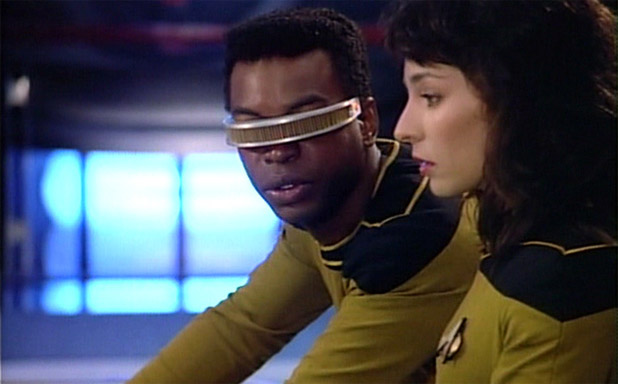More Scientific Advancement Spurred On By Star Trek

Another gadget that was inspired by Star Trek seems to be making its way into reality. This time it’s Geordi’s visor. After gathering data, the device uses an algorithm to translate it into sound. However, unlike hearing, this fascinating device activates the visual cortex of the user’s brain by delivering the purely auditory data. It allows the user to “see” their surroundings with quite a bit of detail, including recognizing written words.
The invention is the invention of Hebrew University of Jerusalem's Dr. Amir Amedi. Amedi says that with only a relatively brief period of training, users can learn how to interpret a ton of information the "soundscapes" created by the computer algorithm, including the nature of complex everyday objects, the location and posture of people in a room, and even written letters and words.
What makes this particularly cool is that the sounds being created actually activate the otherwise dormant visual cortices of congenitally blind people. Previous research had indicated that the visual cortex organizes data into two parallel pathways. The ventral occipito-temporal pathway, called the "what" pathway, deals with form, identity, and color, while the dorsal occipito-parietal pathway, or the "where/how" pathway, focuses on object location and coordinates visual data with motor function.
MRI scans revealed that blind people using this device activated these pathways just as people with normal vision would, indicating the proper functioning of the visual cortex doesn't actually require any visual information. In a statement, Amedi argued that this means that "The brain is not a sensory machine, although it often looks like one; it is a task machine."
This is one of a few recent studies that have suggested that actual visual, auditory, or tactile data aren't necessary for the brain to interpret what is going on around it. The various pathways of the brain seem to stand ready to interpret data, even if the corresponding sensory organs or receptors don't actually work. It seems, as far as the visual cortex concerned, no experience is required.
Check out the video below of LeVar Burton talking about "what Geordi sees". We used it in our last story celebrating LeVar's birthday and found extremely appropriate for the post as well.
(Source: io9)

